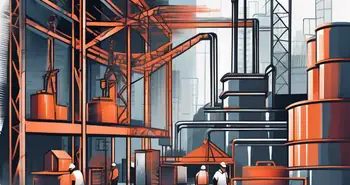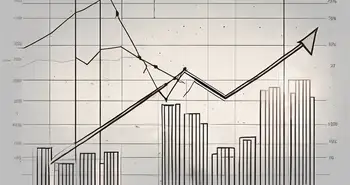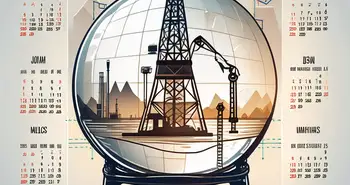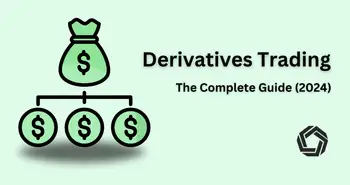The Path to Economic Recovery

In today's volatile economic climate, the path to recovery can seem elusive. However, with a comprehensive analysis, we can uncover the key principles and stages that lead us to a brighter future. In this article, I will guide you through each step of the recovery process, highlighting the challenges and opportunities that lie ahead.
Understanding the Economic Downturn
The first step in any recovery journey is understanding the economic downturn. By examining the causes of recessions, we can gain valuable insights into how to navigate the path to recovery. Over the years, various factors have contributed to economic downturns, such as financial crises, policy failures, and external shocks. These events disrupt the delicate balance of supply and demand, causing a ripple effect that negatively impacts businesses and individuals alike.
For example, during the housing market crash of 2008, the subprime mortgage crisis triggered a chain reaction that led to a global recession. As an expert in economic analysis, I witnessed firsthand the devastating effects of this downturn. Many families lost their homes, and businesses crumbled under the weight of the crisis.
The Causes of Economic Recessions
Economic recessions can stem from a variety of factors. Often, they are the result of imbalances in the economy, such as excessive debt, inflated asset prices, or a decline in consumer spending. In some cases, external factors, like natural disasters or geopolitical tensions, can also play a significant role.
It's crucial to understand that economic recessions are a natural part of the economic cycle. Just as there are booms, there will inevitably be busts. However, by recognizing the warning signs and addressing the underlying causes, we can mitigate the severity and duration of a downturn.
The Impact of Economic Downturns on Society
The effects of economic downturns extend beyond the financial realm, permeating every aspect of society. High unemployment rates, reduced access to credit, and decreased consumer spending can create a domino effect, leading to social unrest and political instability.
During the Great Depression, for instance, families struggled to put food on the table, and crime rates surged. The human toll was enormous, leaving a lasting scar on the fabric of society. As an expert economist, I am driven by a deep understanding of the far-reaching consequences of economic downturns, which fuels my commitment to finding sustainable recovery solutions.
Key Principles of Economic Recovery
With a firm grasp on the causes and impact of economic downturns, we can now delve into the key principles that drive economic recovery. Two crucial tools at policymakers' disposal are fiscal policy and monetary policy.
The Role of Fiscal Policy in Economic Recovery
Fiscal policy refers to the use of government spending and taxation to influence the economy. During an economic downturn, expansionary fiscal policy can help stimulate growth and create employment opportunities. By investing in infrastructure projects, increasing social welfare programs, and providing tax incentives to businesses, governments can inject much-needed funds into the economy.
However, it's essential to strike a careful balance when implementing fiscal policy measures. While government spending can bolster economic activity, excessive budget deficits can lead to inflation and a decline in the value of the currency. As an expert advisor to governments, I have witnessed the delicate dance between robust fiscal stimulus and prudent fiscal management.
The Importance of Monetary Policy in Stimulating Growth
In addition to fiscal policy, monetary policy plays a crucial role in economic recovery. Central banks, such as the Federal Reserve and the European Central Bank, implement monetary policy by controlling interest rates and managing the money supply.
During an economic downturn, central banks can lower interest rates to encourage borrowing and investment, thereby stimulating economic growth. They can also engage in quantitative easing, where they inject liquidity into the financial system by purchasing government bonds or other financial assets.
However, the challenge lies in finding the right balance between stimulating growth and preventing inflation. As an expert economist, I have worked closely with central banks to devise strategies that strike this delicate equilibrium, ensuring long-term stability and sustainable growth.
The Stages of Economic Recovery
Now that we have explored the principles that underpin economic recovery, let us journey through the different stages of this transformative process.
Early Stage: Stabilization and Damage Control
As with any crisis, the first stage of economic recovery involves stabilizing the situation and minimizing the damage. In this phase, policymakers focus on addressing immediate challenges, such as restoring confidence in the financial system, preventing further job losses, and providing emergency relief to affected individuals and businesses.
During the 2008 financial crisis, governments around the world implemented bold measures to stabilize the banking sector, prevent widespread bankruptcies, and inject liquidity into the economy. These decisive actions were vital in laying the groundwork for subsequent stages of recovery.
Middle Stage: Revitalization and Growth
Once the initial shock has subsided, economies enter a phase of revitalization and growth. In this stage, policymakers aim to kickstart economic activity by implementing expansionary fiscal and monetary policies. Governments invest in infrastructure projects, incentivize innovation and entrepreneurship, and drive consumer spending through tax cuts or cash transfers.
During the middle stage of recovery, I have witnessed countless success stories of businesses rebounding, job creation gaining momentum, and optimism returning to the markets. These valuable experiences as an expert economist fuel my passion for helping societies overcome adversity and forge a brighter future.
Late Stage: Sustainability and Long-Term Planning
The final stage of economic recovery is about ensuring long-term sustainability and implementing strategic planning. At this point, policymakers shift their focus from short-term stimuli to long-term structural reforms. This might involve bolstering education and skills training programs, investing in research and development, and fostering a resilient and diversified economy.
As an economist with extensive experience advising governments and international organizations, I have witnessed firsthand the transformative power of long-term planning. By embracing innovative policies and fostering a culture of sustainability, nations can build economies that are more resilient to future shocks and better equipped to navigate the challenges of the 21st century.
Challenges in the Path to Economic Recovery
While the path to economic recovery is paved with opportunities, it is not without its fair share of challenges. Some of the most critical hurdles we must overcome include addressing unemployment and balancing inflation with economic growth.
Dealing with Unemployment during Recovery
One of the most pressing challenges in the journey towards economic recovery is tackling unemployment. During downturns, businesses often downsize or close altogether, leaving many individuals without employment opportunities. This creates significant social and economic burdens, as families struggle to make ends meet and economies suffer from decreased consumer spending.
As an expert economist, I have advocated for comprehensive job creation programs, such as infrastructure projects, targeted skills training, and support for small businesses. By equipping individuals with the necessary tools and fostering an environment conducive to entrepreneurship, we can overcome the challenge of unemployment and set economies on a path to sustained recovery.
Balancing Inflation and Economic Growth
Another crucial challenge in the path to economic recovery is striking the right balance between inflation and economic growth. While some inflation is desirable, as it signifies a healthy level of economic activity, excessive inflation can erode purchasing power and destabilize economies.
As an expert economist, I rely on my deep understanding of macroeconomic indicators and data to advise governments on implementing policies that foster sustainable economic growth without compromising price stability. By aligning monetary and fiscal policy measures, we can strike the right equilibrium, ensuring long-term prosperity for societies.
The Role of International Cooperation in Economic Recovery
In an interconnected world, international cooperation plays a crucial role in economic recovery. As nations navigate the path to recovery, collaboration and coordination are essential to maximize the benefits of globalization and minimize the vulnerabilities.
The Impact of Global Trade on Recovery
Global trade has the potential to be a driving force in economic recovery. By opening up markets, reducing trade barriers, and fostering international investment, nations can tap into new opportunities and benefit from a division of labor on a global scale.
However, it's essential to strike a balance between safeguarding domestic industries and embracing the benefits of trade. As an expert economist, I have witnessed the positive impact of well-regulated and fair trade practices on recovery efforts.
The Importance of International Financial Institutions in Recovery
International financial institutions, such as the International Monetary Fund (IMF) and the World Bank, also play a critical role in supporting economic recovery. Through their lending programs, technical assistance, and policy advice, these institutions provide vital resources and expertise to countries in need.
As an expert economist who has collaborated closely with these institutions, I have seen the transformative impact of their support. By harnessing the collective wisdom and resources of the international community, nations can overcome the challenges of economic recovery and build stronger, more inclusive economies.
As we navigate the complexities of economic recovery, innovative tools and platforms like Morpher are essential for empowering individuals to take control of their financial future. Morpher.com's revolutionary trading platform, with its zero fees, infinite liquidity, and unique trading experiences, is at the forefront of democratizing the world of investing. Whether you're looking to diversify your portfolio with fractional investing, profit from market downturns through short selling, or maximize your trades with 10X leverage, Morpher offers a secure and user-centric approach to trading across various asset classes. Embrace the future of investing and Sign Up and Get Your Free Sign Up Bonus today to start building a more resilient and inclusive economic future for yourself.

Disclaimer: All investments involve risk, and the past performance of a security, industry, sector, market, financial product, trading strategy, or individual’s trading does not guarantee future results or returns. Investors are fully responsible for any investment decisions they make. Such decisions should be based solely on an evaluation of their financial circumstances, investment objectives, risk tolerance, and liquidity needs. This post does not constitute investment advice.

Painless trading for everyone
Hundreds of markets all in one place - Apple, Bitcoin, Gold, Watches, NFTs, Sneakers and so much more.

Painless trading for everyone
Hundreds of markets all in one place - Apple, Bitcoin, Gold, Watches, NFTs, Sneakers and so much more.









